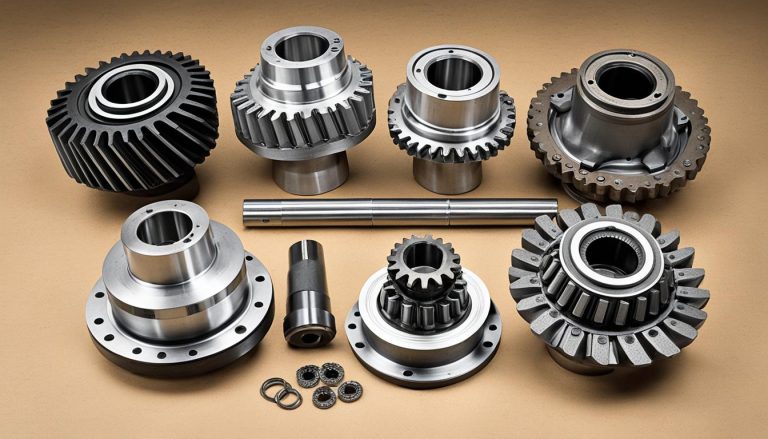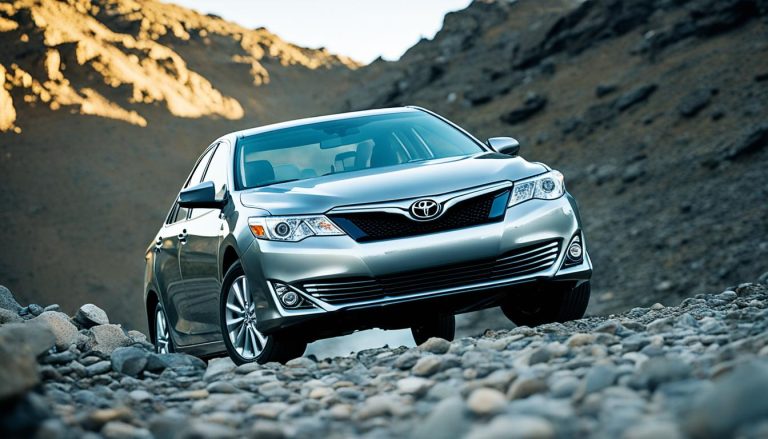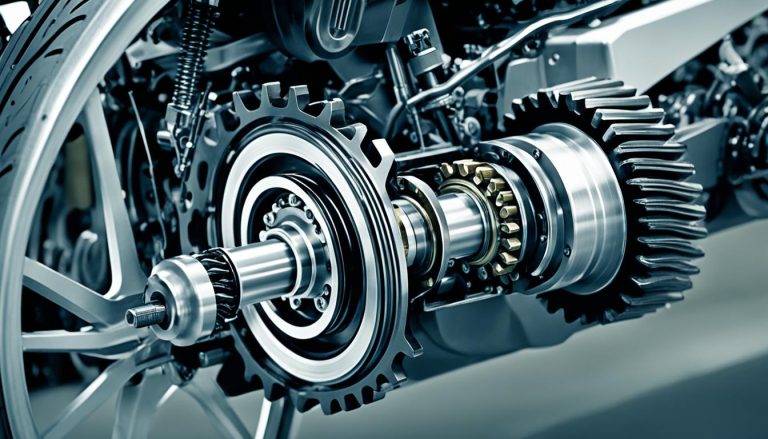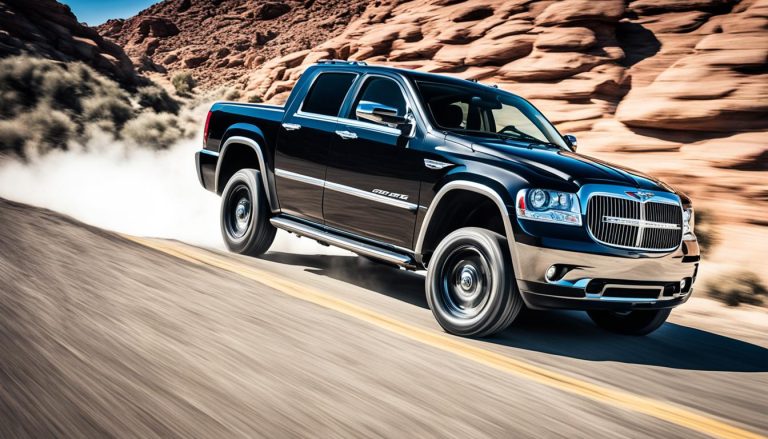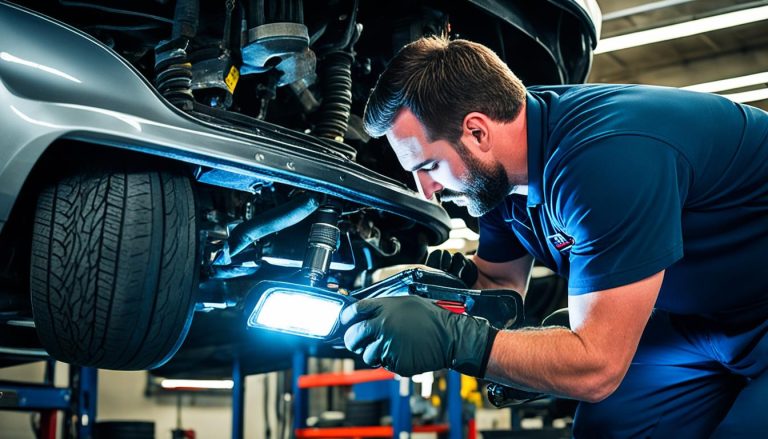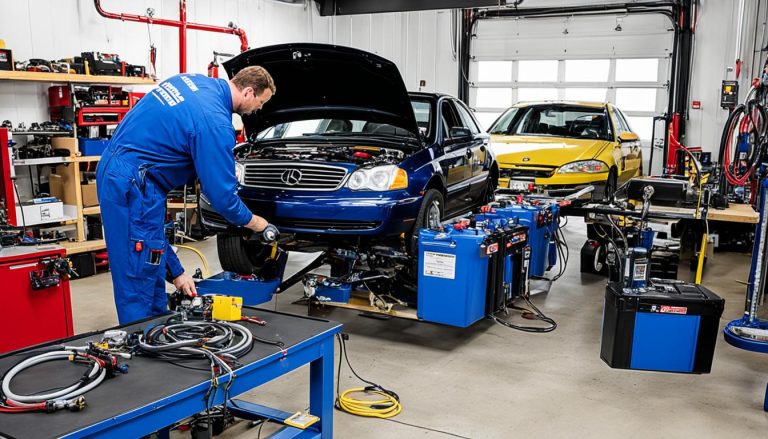Understanding Non Limited Slip Rear Axles
A non limited slip rear axle, also known as an open differential, is a type of rear axle found in many vehicles. It allows the rear wheels to spin independently of each other, without any mechanical connection. This means that power is only sent to one wheel at a time, which can result in loss of traction in slippery conditions. Non limited slip axles are commonly used in everyday driving situations where maximum traction is not necessary. They are not recommended for off-road or high-performance applications.
Key Takeaways
- A non limited slip rear axle, also known as an open differential, allows the rear wheels to spin independently of each other.
- Power is only sent to one wheel at a time, which can result in loss of traction in slippery conditions.
- Non limited slip axles are commonly used in everyday driving situations where maximum traction is not necessary.
- They are not recommended for off-road or high-performance applications.
Limited Slip vs. Non Limited Slip
When it comes to rear axles, there are two primary types: limited slip differentials (LSDs) and non limited slip axles. Understanding the difference between these two options is essential for making an informed decision about which type is best suited for your vehicle. Let’s take a closer look at the distinctions between limited slip and non limited slip axles.
What is a Limited Slip Differential?
A limited slip differential, as the name implies, provides limited slip or differential action by sensing when one wheel is losing traction and transferring power to the other wheel. This mechanism allows for improved traction and handling in slippery conditions, making it particularly beneficial for off-road or high-performance applications. With a limited slip differential, both wheels receive power, ensuring better stability and reduced loss of traction.
Benefits of a Limited Slip Differential:
- Improved traction and handling on slippery surfaces.
- Enhanced stability and reduced loss of traction.
- Optimal choice for off-road and high-performance applications.
What is a Non Limited Slip Axle?
A non limited slip axle, also known as an open differential, does not have a mechanism to transfer power between the wheels. In this design, power is sent to only one wheel at a time. While non limited slip axles are commonly used in everyday driving situations where maximum traction is not necessary, they can result in reduced stability and traction loss, especially in slippery conditions.
Disadvantages of a Non Limited Slip Axle:
- Loss of traction and reduced stability on slippery surfaces.
- Not ideal for off-road or high-performance applications.
Comparison: Limited Slip vs. Non Limited Slip
| Aspect | Limited Slip Differential | Non Limited Slip Axle |
|---|---|---|
| Traction in Slippery Conditions | Provides improved traction and handling | May result in loss of traction and reduced stability |
| Suitability | Ideal for off-road and high-performance applications | Commonly used in everyday driving situations |
| Cost | Tends to be more expensive | Typically more affordable |
| Maintenance | May require more maintenance due to complexity | Generally requires less maintenance |
When deciding between a limited slip and non limited slip rear axle, it’s crucial to consider your specific driving needs and conditions. If you frequently encounter slippery roads or enjoy off-road adventures, a limited slip differential may be the optimal choice, providing improved traction and stability. On the other hand, if you primarily drive on paved surfaces and do not require maximum traction, a non limited slip axle can be a cost-effective and practical option.
Types of Rear Axles
When it comes to rear axles, there are various types available, each with its own set of characteristics and advantages. Understanding the different types can help you make an informed decision when choosing the right rear axle for your vehicle. Let’s explore the main types of rear axles:
1. Non Limited Slip Axles
Non limited slip axles, also known as open differentials, are commonly found in many vehicles. They allow the rear wheels to spin independently of each other, without any mechanical connection. While they are suitable for everyday driving situations, they may not provide optimal traction in slippery or off-road conditions.
2. Limited Slip Differentials (LSD)
Limited slip differentials have a mechanism that senses when one wheel is losing traction and transfers power to the other wheel. This allows for better traction and improved handling in slippery conditions. LSDs provide some amount of power transfer to both wheels, enhancing stability and performance.
3. Locking Differentials
Locking differentials completely lock the two wheels together, ensuring maximum traction. They are commonly used in off-road vehicles and provide exceptional performance in challenging terrains. However, they may not be ideal for everyday driving due to their reduced maneuverability and potential tire wear.
4. Electronic Locking Differentials
Electronic locking differentials, like the e-locker, utilize advanced electronic control to engage and disengage the locking mechanism. This allows for on-demand traction control, providing the benefits of a locking differential when needed while maintaining optimal maneuverability during regular driving.
The choice of rear axle type depends on factors such as your vehicle’s intended use, the terrain you regularly encounter, and the driving conditions you face. Now that you have a better understanding of the various types of rear axles, you can make a more informed decision when choosing the right one for your specific needs.
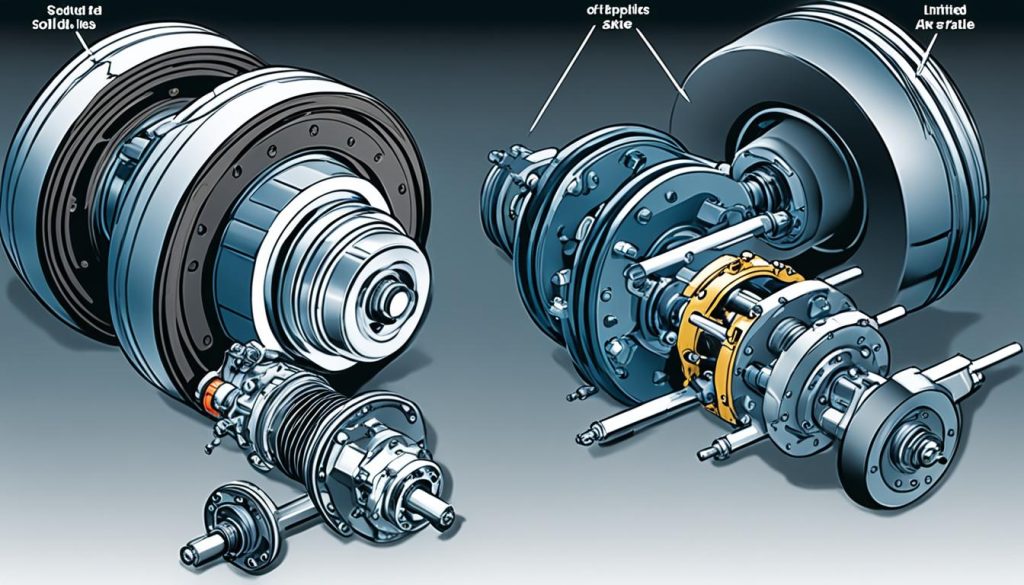
Benefits of Non Limited Slip Axles
Non limited slip axles offer a range of advantages that make them an excellent choice for everyday driving. Whether you’re commuting to work or running errands around town, these axles provide key benefits that enhance your driving experience.
Cost-Effectiveness
In terms of affordability, non limited slip axles shine. Compared to limited slip or locking differentials, they are typically more budget-friendly. This makes them an ideal option for drivers who don’t require maximum traction but still want a reliable and efficient axle. By opting for a non limited slip axle, you can enjoy the benefits without breaking the bank.
Smooth and Quiet Operation
One of the standout features of non limited slip axles is their quiet and smooth operation. The absence of complex mechanical components in these axles ensures a quieter and more refined driving experience. You can enjoy a peaceful and comfortable ride without the noise and vibrations often associated with other differential systems.
Low Maintenance and Reliability
When it comes to maintenance, non limited slip axles require less attention compared to their more complex counterparts. The simple design of these axles makes them less prone to failure, resulting in fewer maintenance issues over time. This means less time and money spent on repairs and more time enjoying your vehicle on the road.
Now that you understand the benefits of non limited slip axles, you can make an informed decision when choosing the right rear axle for your needs.
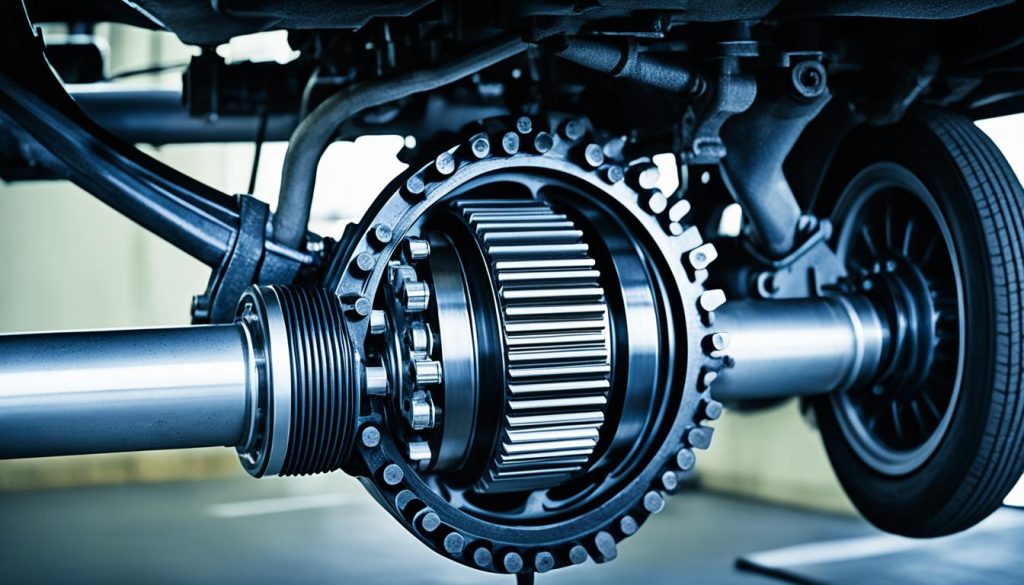
| Benefits of Non Limited Slip Axles |
|---|
| Cost-Effectiveness |
| Smooth and Quiet Operation |
| Low Maintenance and Reliability |
Choosing the Right Rear Axle for Your Needs
When it comes to selecting a rear axle for your vehicle, it is crucial to consider your specific needs and driving conditions. If you frequently find yourself navigating tricky terrains, such as slippery or off-road conditions, opting for a limited slip or locking differential can greatly enhance your vehicle’s traction and stability.
On the other hand, if your primary driving routes consist of paved roads and you do not require maximum traction, a non limited slip axle may be a more suitable choice. It’s worth remembering that non limited slip axles are commonly found in everyday driving situations where optimal traction is not paramount.
Several factors need to be weighed in this decision-making process. Consider the cost, maintenance requirements, and the intended use of your vehicle. To ensure you make the right choice, consulting with a knowledgeable mechanic or differential specialist can provide valuable insights and guidance.
FAQ
What is a non limited slip rear axle?
A non limited slip rear axle, also known as an open differential, is a type of rear axle found in many vehicles. It allows the rear wheels to spin independently of each other, without any mechanical connection. Power is only sent to one wheel at a time, which can result in loss of traction in slippery conditions.
What is the difference between a limited slip and a non limited slip axle?
The main difference is how they distribute power to the wheels. Limited slip differentials have a mechanism that can sense when one wheel is losing traction and transfer power to the other wheel, providing better traction and improved handling in slippery conditions. Non limited slip axles do not have this mechanism and can only send power to one wheel at a time, resulting in loss of traction and reduced stability.
What are the different types of rear axles?
There are several types of rear axles, including non limited slip axles, limited slip differentials, locking differentials, and electronic locking differentials. Non limited slip axles are commonly used in everyday driving situations. Limited slip differentials provide some power transfer to both wheels, while locking differentials completely lock the two wheels together for maximum traction. Electronic locking differentials use electronic control to engage and disengage the locking mechanism.
What are the benefits of a non limited slip axle?
Non limited slip axles are more affordable, quieter, and smoother in operation compared to other types of differentials. They also require less maintenance and are less prone to failure. These benefits make them suitable for everyday driving situations where maximum traction is not necessary.
How do I choose the right rear axle for my needs?
When choosing a rear axle, consider factors such as your specific needs, driving conditions, cost, maintenance requirements, and intended use of the vehicle. If you regularly drive in slippery or off-road conditions, a limited slip or locking differential may provide better traction and stability. If you primarily drive on paved roads and do not require maximum traction, a non limited slip axle may be more suitable. Consulting with a knowledgeable mechanic or differential specialist can help guide your decision.

